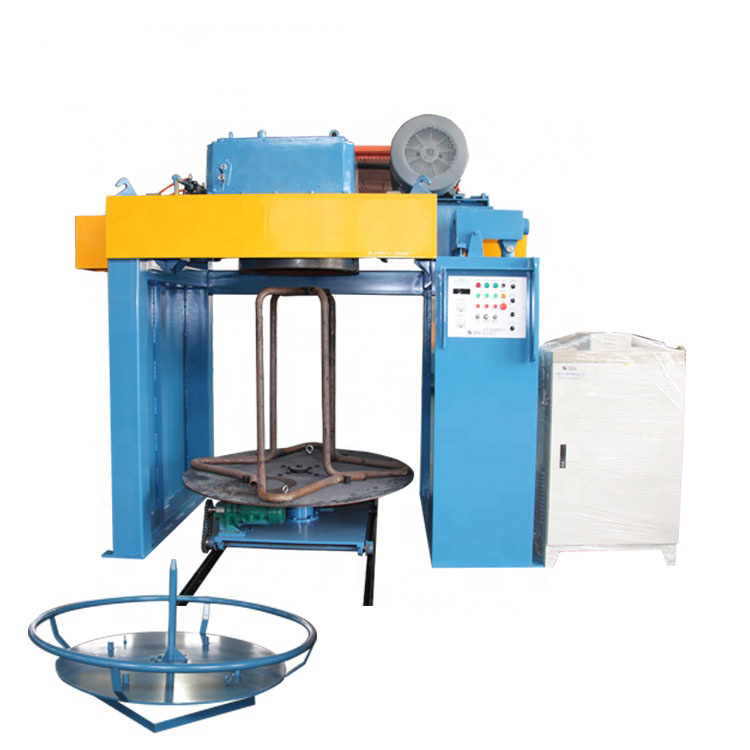The History and Evolution of Dead Block Coiler Technology
Dead block coilers have been a crucial piece of equipment in the wire and cable industry for many years. These machines are used to wind wire or cable onto a spool or reel in a controlled and efficient manner. The history of dead block coilers dates back to the early 20th century when the demand for wire and cable products began to increase rapidly.
The first dead block coilers were simple machines that relied on manual labor to operate. Workers would manually guide the wire or cable onto the spool while the machine rotated. This process was slow and labor-intensive, but it was the best technology available at the time.

As technology advanced, so did dead block coiler technology. In the mid-20th century, automated dead block coilers were introduced. These machines used motors and sensors to automatically wind the wire or cable onto the spool. This greatly increased efficiency and productivity in the wire and cable industry.
One of the key advancements in dead block coiler technology was the introduction of computerized controls. These controls allowed operators to program the machine to wind the wire or cable in a specific pattern or tension. This level of precision was crucial for industries that required consistent and high-quality wire and cable products.
In recent years, dead block coilers have continued to evolve with the introduction of new materials and technologies. For example, some modern dead block coilers are equipped with laser sensors that can detect the diameter of the wire or cable being wound. This allows the machine to adjust its winding speed and tension accordingly, resulting in a more uniform and tightly wound spool.
Another important advancement in dead block coiler technology is the use of servo motors. These motors provide precise control over the winding process, allowing for faster speeds and more accurate winding patterns. This has helped to further increase productivity and efficiency in the wire and cable industry.
Overall, dead block coilers have come a long way since their humble beginnings in the early 20th century. Today, these machines are essential for the production of wire and cable products in a wide range of industries. With continued advancements in technology, dead block coilers will likely continue to play a crucial role in the wire and cable industry for many years to come.
In conclusion, the history and evolution of dead block coiler technology have been marked by significant advancements in automation, precision, and efficiency. From manual labor to computerized controls and servo motors, these machines have come a long way in a relatively short period of time. As technology continues to advance, dead block coilers will likely continue to evolve and improve, helping to meet the growing demand for high-quality wire and cable products in industries around the world.
Tips and Tricks for Maximizing Efficiency with Dead Block Coiler Operations
Wire Dead Block Coiler Machine are an essential piece of equipment in the wire and cable industry, used for coiling finished products onto spools or reels. These machines play a crucial role in the production process, as they help to ensure that the final product is neatly wound and ready for shipping or further processing. However, like any piece of machinery, dead block coilers require proper maintenance and operation to maximize efficiency and productivity.

One of the key factors in maximizing efficiency with dead block coiler operations is proper setup and calibration. Before beginning a coiling operation, it is important to ensure that the machine is properly calibrated to the specifications of the wire or cable being coiled. This includes setting the correct tension, speed, and diameter parameters to ensure that the finished product is wound evenly and without any defects.
In addition to proper setup and calibration, it is also important to regularly inspect and maintain the Static coiler dead block machines to prevent downtime and ensure optimal performance. This includes checking for any signs of wear or damage on the machine, as well as lubricating moving parts to prevent friction and reduce the risk of breakdowns.
Another important tip for maximizing efficiency with dead block coiler operations is to pay attention to the coiling pattern being used. Different coiling patterns can affect the quality of the finished product, so it is important to choose the right pattern for the specific wire or cable being coiled. Additionally, adjusting the tension and speed of the machine can help to achieve the desired coiling pattern and ensure that the finished product meets quality standards.
In addition to proper setup, calibration, and maintenance, it is also important to train operators on the proper use of the dead block coiler. This includes teaching them how to safely operate the machine, as well as how to troubleshoot common issues that may arise during operation. By providing operators with the necessary training and support, companies can help to ensure that their dead block coiler operations run smoothly and efficiently.
One final tip for maximizing efficiency with dead block coiler operations is to invest in quality equipment and spare parts. By using high-quality machines and components, companies can reduce the risk of breakdowns and ensure that their coiling operations run smoothly. Additionally, having spare parts on hand can help to minimize downtime in the event of a breakdown, allowing production to resume quickly and efficiently.
In conclusion, dead block coilers are an essential piece of equipment in the wire and cable industry, and proper maintenance and operation are key to maximizing efficiency and productivity. By following the tips outlined in this article, companies can ensure that their coiling operations run smoothly and produce high-quality finished products. From proper setup and calibration to regular maintenance and operator training, there are many steps that can be taken to optimize dead block coiler operations and achieve the best possible results.






